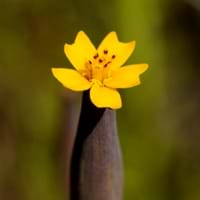Life Span
Annual and Perennial
Annual
Type
Bulb or Corm or Tuber
Flowering Plants
Origin
Latin America and the Caribbean, Central America, Micronesia
Mexico, Central America, South America
Types
Hannah Yams, Japanese Sweet Potatoes
Not available
Number of Varieties
Not Available
Habitat
Cold Regions, Tropical regions
Cultivated Beds
USDA Hardiness Zone
11-12
8-11
AHS Heat Zone
12-1
12 - 1
Sunset Zone
21,22
A1, A2, A3, H1, H2, 1a, 1b, 2a, 2b, 3a, 3b, 4, 5, 6, 7, 8, 9, 10, 11, 12, 13, 14, 15, 16, 17, 18, 19, 20, 21, 22, 23, 24
Habit
Vining/Climbing
Cushion/Mound-forming
Minimum Width
Not Available
Flower Color
Not Available
Yellow, Orange, Gold, Orange Red
Flower Color Modifier
Bicolor
Bicolor
Fruit Color
Not Available
Not Available
Leaf Color in Spring
Green, Purple, Light Green, Chartreuse, Bronze
Green
Leaf Color in Summer
Light Green
Green
Leaf Color in Fall
Several shades of Green
Green
Leaf Color in Winter
Light Green
Light Green
Leaf Shape
Heart-shaped
Pinnate
Plant Season
Spring, Summer, Fall, Winter
Spring, Summer, Fall
Sunlight
Full Sun, Partial Sun
Full Sun, Partial Sun
Growth Rate
Very Fast
Fast
Type of Soil
Clay, Loam, Sand
Loam, Sand
The pH of Soil
Acidic, Neutral, Alkaline
Acidic, Neutral
Soil Drainage
Well drained
Well drained
Bloom Time
Late Fall, Early Winter, Winter
Indeterminate
Tolerances
Drought
Drought
Where to Plant?
Ground, Pot
Ground
How to Plant?
Stem Cutting, Tuber propagation
Divison, Layering, Stem Cutting
Plant Maintenance
Medium
Medium
Watering Requirements
Average Water Needs, Needs a lot of water initially
Requires regular watering
In Summer
Lots of watering
Lots of watering
In Spring
Moderate
Moderate
In Winter
Average Water
Average Water
Soil pH
Acidic, Neutral, Alkaline
Slightly Acidic
Soil Type
Clay, Loam, Sand
Sandy
Soil Drainage Capacity
Well drained
Well drained
Sun Exposure
Full Sun, Partial Sun
Part sun
Pruning
Remove damaged leaves, Remove dead branches, Remove dead leaves
Remove damaged leaves, Remove dead branches, Remove dead leaves
Fertilizers
All-Purpose Liquid Fertilizer
All-Purpose Liquid Fertilizer
Pests and Diseases
Aphids, Beetles, Leafminers, Red blotch
Red blotch
Plant Tolerance
Drought
Drought
Flower Petal Number
Single
Single
Fragrant Bark/Stem
No
Yes
Foliage Texture
Coarse
Fine
Foliage Sheen
Matte
Matte
Invasive
Sometimes
Sometimes
Attracts
Aphids, Beetles, Mites, white worms
Butterflies
Allergy
Abdominal pain, Skin rash, Swelling, Vomiting
Not Available
Aesthetic Uses
Not Used For Aesthetic Purpose
Beautification, Decorating walls, Hanging Basket, Showy Purposes, Used as an interior landscaping species
Beauty Benefits
Not Available
Not Available
Environmental Uses
Air purification
Air purification, Food for birds
Medicinal Uses
Potassium, ß-carotene, Vitamin C
Cancer, Diarrhea, Hepatitis, Inflammation, Wounds
Part of Plant Used
Leaves, Root, Shoots
Flowers
Other Uses
Used As Food, Used for its medicinal properties
Air freshner, Condiment, For making oil for cosmetics, Garland, Making Sweet Scented Oil, Medicinal oil, Used as an ointment, Used as Ornamental plant, Used for fragrance, Used for its medicinal properties, Used for Landscaping
Used As Indoor Plant
Yes
Insignificant
Used As Outdoor Plant
Yes
Yes
Garden Design
Container, Edible, Groundcover, Hanging Basket, Herb / Vegetable, Mixed Border, Vine
Dried Flower, Landscape, Lawns and Turf
Botanical Name
IPOMOEA batatas
Tagetes subulata
Common Name
Sweet Potato, Sweet Potato Vine
Tagetes Sabulata
In Hindi
शकरकंद
Tagetes subulata
In German
Süßkartoffel
Tagetes Subulata
In French
Patate douce
Tagetes Subulata
In Spanish
Batata
Tagetes Subulata
In Greek
Γλυκοπατάτα
Tagetes Subulata
In Portuguese
Batata doce
Tagetes Subulata
In Polish
Słodki ziemniak
Tagetes Subulata
In Latin
Dulcis SOLANUM TUBEROSUM
Tagetes Subulata
Phylum
Magnoliophyta
Tracheophyta
Class
Magnoliopsida
Magnoliopsida
Order
Solanales
Asterales
Family
Convolvulaceae
Asteraceae
Clade
Angiosperms, Asterids, Eudicots
Angiosperms, Asterids, Eudicots
Tribe
Not Available
Tageteae
Subfamily
Not Available
Asteroideae
Number of Species
Not Available
Season and Care of Sweet Potato and Tagetes Subulata
Season and care of Sweet Potato and Tagetes Subulata is important to know. While considering everything about Sweet Potato and Tagetes Subulata Care, growing season is an essential factor. Sweet Potato season is Spring, Summer, Fall and Winter and Tagetes Subulata season is Spring, Summer, Fall and Winter. The type of soil for Sweet Potato is Clay, Loam, Sand and for Tagetes Subulata is Loam, Sand while the PH of soil for Sweet Potato is Acidic, Neutral, Alkaline and for Tagetes Subulata is Acidic, Neutral.
Sweet Potato and Tagetes Subulata Physical Information
Sweet Potato and Tagetes Subulata physical information is very important for comparison. Sweet Potato height is 60.00 cm and width Not Available whereas Tagetes Subulata height is 30.50 cm and width 30.50 cm. The color specification of Sweet Potato and Tagetes Subulata are as follows:
Sweet Potato flower color: Not Available
Sweet Potato leaf color: Green, Purple, Light Green, Chartreuse and Bronze
Tagetes Subulata flower color: Yellow, Orange, Gold and Orange Red
- Tagetes Subulata leaf color: Green
Care of Sweet Potato and Tagetes Subulata
Care of Sweet Potato and Tagetes Subulata include pruning, fertilizers, watering etc. Sweet Potato pruning is done Remove damaged leaves, Remove dead branches and Remove dead leaves and Tagetes Subulata pruning is done Remove damaged leaves, Remove dead branches and Remove dead leaves. In summer Sweet Potato needs Lots of watering and in winter, it needs Average Water. Whereas, in summer Tagetes Subulata needs Lots of watering and in winter, it needs Average Water.





